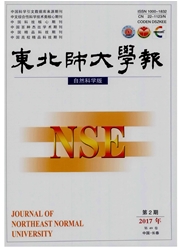

 中文摘要:
中文摘要:
通过大样本测定,定量分析了松嫩平原4个不同生境芦苇种群叶片生长的可塑性与规律性.结果表明:异质生境各芦苇种群的叶长、叶宽、叶生物量、叶面积和比叶面积之间均有显著差异.季节性积水生境和人工林缘沙地生境芦苇叶片各数量性状的可塑性最大,而碱斑生境的最小.叶生物量与叶面积的可塑性远大于叶片的其他数量性状.各生境芦苇种群叶宽与叶长、叶生物量与叶面积、叶生物量与叶长、叶生物量与叶宽均呈显著的幂函数异速生长关系.尽管芦苇叶片的数量性状在各组异速关系中,其异速系数1gβ均表现出显著的差异(P〈0.01),但其异速指数却有相同的规律,即叶宽与叶长异速指数α〈1,叶生物量与叶长/叶宽异速指数α〉1,而叶生物量与叶面积异速指数α≈1.异质生境芦苇叶片较大的表型可塑性与一致的异速生长规律性,表征了广布种芦苇尽管具有宽幅适应性,但其叶片的数量性状仍保持相同的生长有序性.
 英文摘要:
英文摘要:
The plasticity and regularity of reed (Phragrnites australis) leaves from 4 heterogeneous habitats in the Songnen Plains of China was analyzed quantitatively using large samples. The results shows that there were significant differences of leaf length, leaf width, leaf biomass, leaf area and specific leaf area among the following 4 reed populations at heterogeneous habitats where are seasonal watered habitats, sandy habitats at artificial forest edges, alkali spot habitats and alkalized meadow habitats, respectively. The plasticity of every quantitative characters of reed leaves were all the biggest in seasonal watered habitat and sandy habitat, while the smallest in alkali spot. The plasticity of leaf biomass and leaf area was bigger than the other quantitative characters. The allometric relations of leaf width and leaf length, leaf biomass and leaf area, leaf biomass and leaf length/leaf width all shows significant power function (Y=β X^α) regardless of habitat. Although all the allometric coefficients (1gβ) among 4 habitats shows significant difference (P〈0. 01), the allometric index (α) of each relation expresses its own regularity independent of habitats, that is a〈 1 between the leaf width and leaf length, a≈ 1 between the leaf biomass and leaf area, and a〉 1 both the leaf biomass and leaf length/leaf width. The large phenotypic plasticity of reed leaf among 4 heterogeneous habitats and the consistent allometric growth regularity of reed together indicates that although widespread species hold wide adaptability, they keep same growth regularity as their own.
 同期刊论文项目
同期刊论文项目
 同项目期刊论文
同项目期刊论文
 Coarse root spatial distribution determined using a ground-penetrating radar technique in a subtropi
Coarse root spatial distribution determined using a ground-penetrating radar technique in a subtropi 期刊信息
期刊信息
